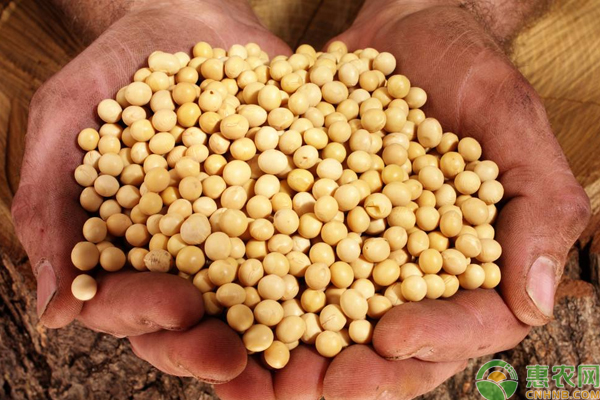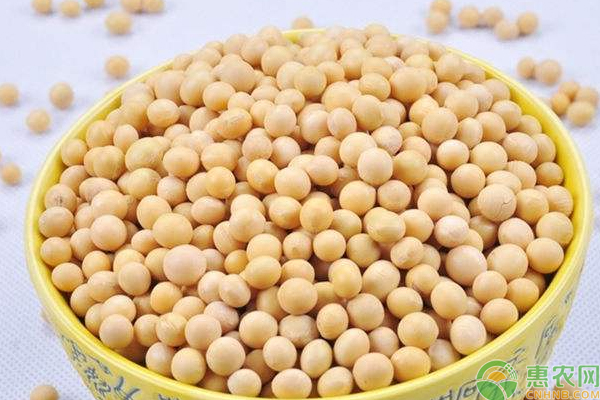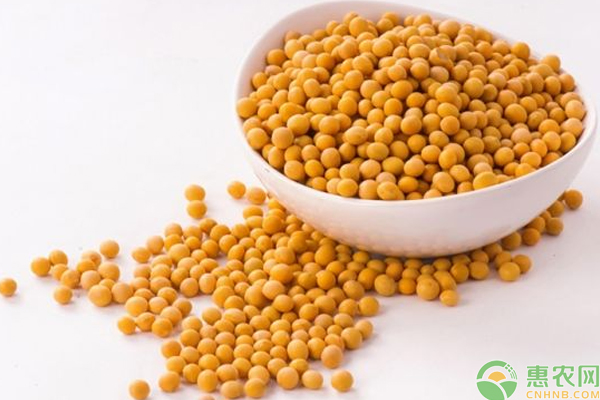How to prevent pests and diseases from soybean planting? High-yield techniques for soybean cultivation and methods for controlling pests and diseases
Soybean has a long history of planting in China. Because of its high nutrient-rich use value, it has a large planting area in China. Today, Xiaobian talks about the high-yield techniques and pest control methods of soybean cultivation. The parents who grow soybeans want to see high yields. As one of the main food crops in China, soybean is planted in China. Because soybean has a wide range of effects, it can be used to extract oil, processed into agricultural and sideline foods, and used as feed. Because of its good nutritional value, it is praised by nutritionists as the “king of beansâ€. Therefore, all growers should learn high-yield soybean cultivation techniques, improve the planting efficiency of soybeans, and increase their income. 1 Discussion on cultivation techniques of soybean 1.1 Preparation before soybean cultivation If growers want to achieve the goal of increasing soybean production, they must do their homework in the beginning of the selection process. It is necessary to pay attention to the selection of higher quality soybean seeds to ensure that the soybean seedlings grown in the late stage of the seed have sufficient growth tolerance. Moreover, the quality of the seeds is also related to the resistance to natural disasters in soybean growth and the insect resistance in the field. The selected soybean seeds should ensure that the granules are full and large enough, and high quality seeds without worm bite marks or other impurities must be selected. High-quality seeds generally refer to soybean seeds with a purity and purity of over 98%, and a germination rate of 90%, and a water content of less than 13%. For example, growers in Henan usually choose Yu 29 and Zheng Dou. 90007 These high-yielding soybean seeds are relatively resistant to disease. Before planting, the growers should also consider the use of plots with certain soil fertility. It is best to choose plots that have not been infected with insects to ensure the health of the roots of soybean growth. Secondly, we must weigh the combination of organic fertilizers and fertilizers. In the early stage, it is necessary to ensure that there is sufficient fertilization bottom material, mainly using high-temperature fermented farmyard manure as fertilizer, and the chemical fertilizer used in cultivation should be based on phosphate fertilizer, and it is not necessary to prepare nitrogen fertilizer for legumes with nitrogen fixation, and Deep fertilization work is carried out from the side of the bean sprouts. 35% of methylthiophosphorus can be used before planting, mixing according to the weight of soybean seeds 0.5%, can effectively control the cystic nematodes often encountered in soybean cultivation, and can also use cypermethrin emulsifiable concentrate to prevent soybeans The harm caused. 1.2 Scientific cultivation in soybean cultivation The cultivation of soybean cultivation can speed up the deepening of the deep soil by tumbling the soil layer, which can make the structure of the soil loose and loose, improve the contact between soil and air, bring the temperature of permeability, and promote the microbe in the soil. The internal vitality allows the organic matter to decompose more quickly in the soil, thereby enhancing the soil fertility and helping the growing soybean plants to absorb the nutrients in the soil [1]. And regular cultivation is also conducive to timely removal of weeds growing in the field together with soybean plants, reducing the weeds and crop residues competing for the nutrients needed for soybean growth, and reducing the prevalence of soybean plants. In order to ensure the stable growth of soybean plants, the cultivation should be optimized, and other crops should be rotated during the soybean planting cycle, which is beneficial to the legumes to smoothly discharge the toxic substances in the soil through their own regulation mechanism. In the autumn, the soil should be turned over and raked in the autumn, and when the sensation is poor, the repression and protection work should be carried out in order to protect the crops, avoid the soil being frozen at low temperatures, and effectively improve the soil fertility. Provide adequate nutrient protection for soybean growth and reduce the wilting of soybean root growth. Pay attention to the water resources management of crop growth, ensure that soybean plants do not overshoot in the rainy season, do drainage work in a timely manner, and increase the number of irrigation in the rainy season to ensure sufficient water for crop growth. Provide nutrition. 1.3 Management of soybean cultivation When the soybean plants grow to a certain extent, they can carry out multiple stages of fertilization work, and carry out three kinds of fertilization processes of base fertilizer, seed fertilizer and topdressing according to certain rules, and transport nutrients in the soil for soybean plants [2]. The weeds in the field should be removed in time. Two weeding work should be carried out in the soybean growth cycle: weeding should be carried out at the time when the soybeans are in the soybean seedlings, and at the beginning of the flowering of the soybeans, and weeding should be carried out in strict accordance with the instructions. To prevent the use of herbicides from affecting the growth of bean sprouts. In the early flowering stage to the full bloom stage of the bean seedlings, the plant growth regulator can also be sprayed appropriately. Generally, the application of paclobutrazol 15kg/hm2 to water 750kg/hm2 is sprayed onto the leaf surface of the plant, which can improve the dwarfing of the plant and promote the stalk of the plant. Thick, petiole shortened, which is beneficial to improve the light transmission of plants, slow down the senescence of plant leaves, and enhance the absorption capacity of soybean plants for nutrients. In addition, spraying the leaves with sodium hydrogen sulfite 1.8kg/hm2 and water 1050kg/hm2 at the initial flowering stage of the bean seedlings can also reduce the consumption of photosynthetic products and promote early maturity of the plants. When plant growth, you can also use seed dressing or foliar spray molybdenum fertilizer to promote the early flowering of soybean seeds. Generally, use 1.5% ammonium molybdate solution for seed dressing, or use 0.05% molybdenum before and after soybean flowering in late autumn. Each of the ammonium acid solutions can be sprayed once, which can promote the early maturity of soybean peas, and can increase the yield of soybean by 5%~10%. 2 Discussion on pest control in soybean cultivation 2.1 Prevention and control of major diseases in soybean cultivation Soybeans are prone to gray spot disease during the growing season, which can cause damage to soybean plants in adult plants. Soybean seedlings or rhizomes are poisoned. Soybean seedlings in the disease usually have semicircular brown spots on the leaves. The lesions on the adult plants will gradually develop from the green round spots to the brown edges and the middle grays, which are very similar to the shape of the eye-shaped lesions [3]. In the early stage of the disease of soybean plants, you can spray in the plant pods or other susceptible areas at the beginning of the disease. You can use 40% carbendazim suspension or 50% carbendazim WP, on 80 ~100kg of water mist can be sprayed once every other week, and repeated 2~3 times can effectively alleviate the gray spot of soybean plants. Henan can also use 50% thiram or 50% carbendazim for seed dressing. Usually 0.3kg of pesticide can control the gray spot of 100kg seed. In addition, soybean plants are also prone to soybean root rot during the growth process. Pay attention to proper close planting during soybean planting, timely remove the water left in the field after heavy rain, and use the soybean seed dressing agent containing carbendazim for seed dressing. , 1000~1500m L per 100kg. In addition, the prevention of soybean downy mildew can be achieved by rotating with non-legume crops, and the management of the field is strengthened to ensure that the soybean growth environment is clean and hygienic. If it is affected by downy mildew, it can be used 300 times. Liquid or metalaxyl 800 times liquid is sprayed into the field, and 40 kg of liquid medicine is needed for control in each 667 m2 field. 2.2 Main pest control in soybean cultivation Soybean is easy to be bitten by the roots of the soybean roots during the seedling stage, and then leaves the eggs in the roots. When the eggs grow into larvae, they will leave feces, causing the roots of the soybean plants to fester, resulting in slower plant growth. It’s hard to grow taller and stronger. Moreover, the root-mouse flies are usually propagated once in 1a, and the eggs are used to wintering at the roots of soybean plants, and then grow into larvae in the spring of the second year, and then continue to propagate larvae at the roots of the plants. Therefore, for the control of soybean root larvae, the larvae can be inhibited. According to the weight of 50 kg of seeds, 0.34 kg of dimethoate emulsifiable concentrate and 2 kg of water are stirred, and after soaking, the soybean plants can be sprayed, preferably In the spring season when the root larvae are proliferated and prosperous, the drug spray is used for prevention and control. Soybean plants also suffer from aphids during growth. Aphids can bite the soybean plants, absorb the nutrients in the plants, make the leaves of the plants more and more yellow, limit the growth process of the plants, and reduce the yield of soybeans. The growers in Henan Province generally use the large insect seed coating agent to start the prevention and control of the mites when they are germinated, and they will also be matched with the appropriate amount of chlorpyrifos powder. The most easily damaged soybean soybean is the soybean heartworm, which needs to be configured according to the amount of 80% dichlorvos per 667m2 of land, and then the corn ear spiked with dichlorvos is placed on the soybean plant. Smoked to the soybean heartworm does not dare to commit, so as to ensure the healthy growth of soybean plants. If the high yield of soybeans to be planted is to be planted by scientific means, it will help to play an important role in the national economy. When planting soybeans, we must first select high-quality soybean seeds of good quality, do a good job in plot selection and fertilizer use in the early stage of cultivation, ensure that the medium-term weeding and irrigation work is completed regularly, strengthen the post-management management of soybean plant growth, and timely grow The scientific and effective prevention and control of various pests and diseases that occur in the disease can ensure the healthy growth of soybean crops. In Xiaobian's view, soybeans are not only nutritious, but also have very good planting prospects. The above are detailed high-yield techniques for soybean cultivation and pest control methods. Don't miss out on all growers. Semaglutide pen injector is a medical device used to administer
semaglutide, a medication used to treat type 2 diabetes. The pen
injector is a prefilled, disposable pen that contains a fixed dose of
semaglutide. It is designed to make it easy for patients to
self-administer the medication with a single injection once a week. The
pen injector is equipped with a needle that is inserted into the skin of
the abdomen, thigh, or upper arm to deliver the medication. The
semaglutide pen injector is a convenient and effective way to manage
type 2 diabetes, as it helps to regulate blood sugar levels and reduce
the risk of complications associated with the condition. Semaglutide Pen Injector,Disposbale Pen Injector,High Precision Pen Injector,Pen Injector For Subcutaneous Shanghai Enjosim Medical Technology Co., Ltd , https://www.enjosimmedical.com


